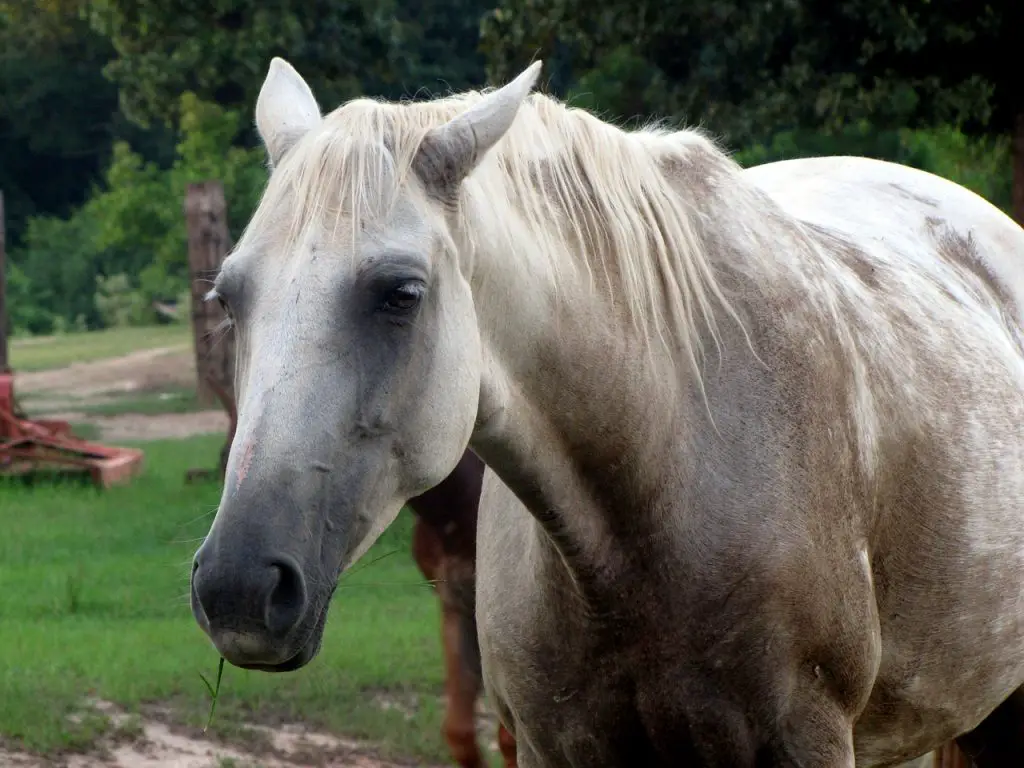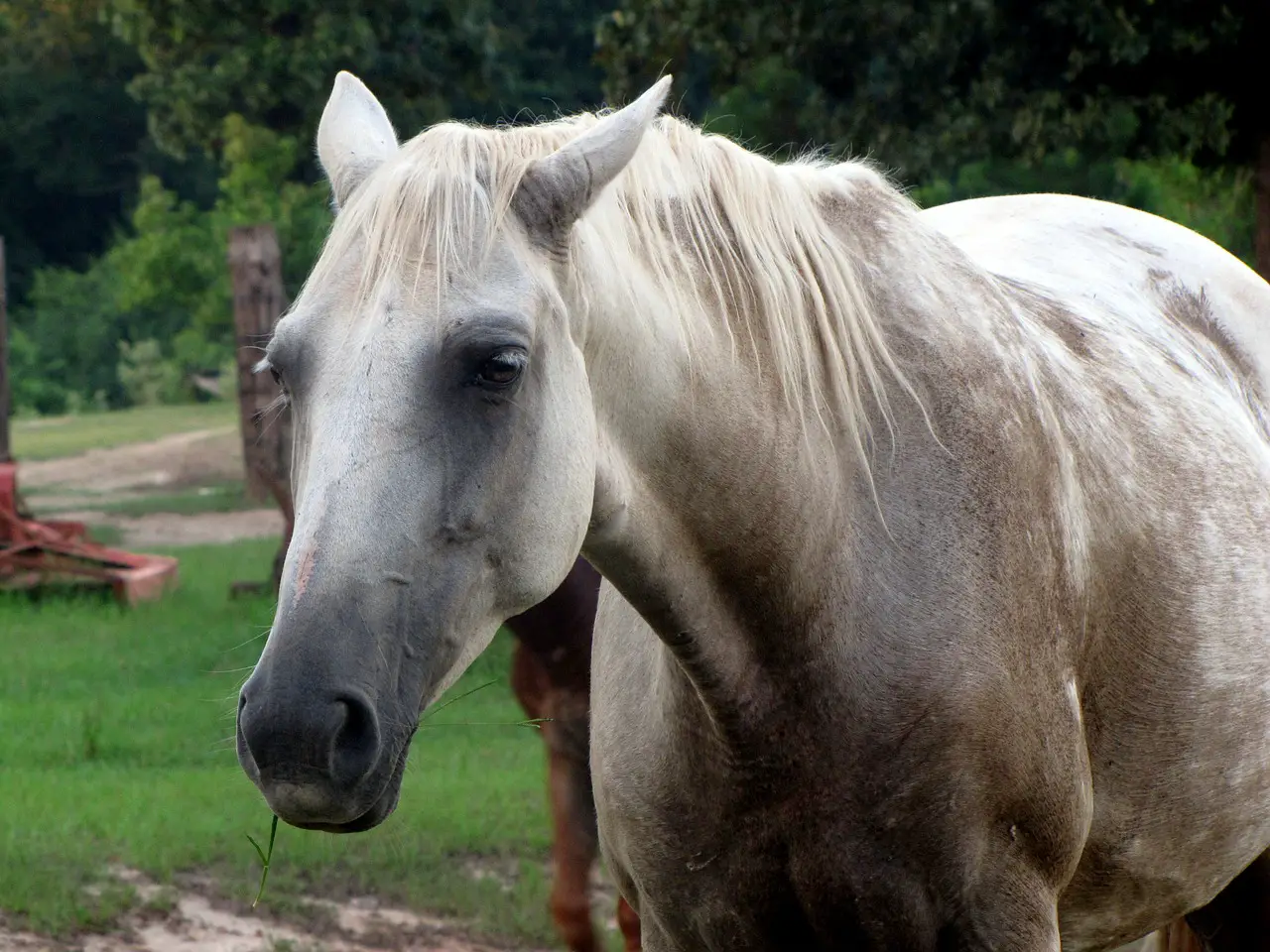Last Updated on March 15, 2022 by Allison Price
“Equine Asthma”, yep that’s right, the new name for “heaves,” RAO,” COPD or any other term we have used over the years.
There are two types of this condition, “summer-pasture-associated” and “classic” recurrent airway obstruction (RAO).
Summer-pasture-associated horses tend to be triggered by spring/summer allergens like grasses and trees, and “classic” horses tend to be triggered by barn dust and mold spores. Most horses in our area of North Carolina are “Summer-Pasture-Associated” asthma patients, so we recommend starting yearly treatment or management in March or April. However, it is important to remember that horses can have both types of asthma and need to be managed all year.
What are your treatment options and management options? Continue reading!
MEDICATIONS:
Horses with Equine Asthma can be treated using a variety of medications.
Option 1 is the cheapest and easiest route but it comes with some risks. This would involve treatment with a systemic steroids (usually prednisolone or dexamethasone). Although steroids can be given orally, we may prefer to inject the steroids for a few days in horses with severe symptoms. It’s inexpensive at $50 per month, easy to administer, and often very effective. It can also cause laminitis in horses and suppress their immune systems. Horses with metabolic diseases such as Equine Metabolic syndrome (insulin resistance), PPID, cushings, or horses who are overweight are at greatest risk.
Option 2 is the Aservo Equihaler. This device is a handheld device that sprays anti-inflammatory medication into the horse’s nostrils. This treatment is FDA approved for horse asthma and has no known side effects. The product was launched in the US in Fall 2020. This treatment has had mixed results. The initial course of treatment, which lasts approximately 12 days, will cost between $300 and $400. The second course of treatment will likely need to be repeated between one and six weeks after the first. The main disadvantages include the high cost and need to adjust the horse to the device. Some horses may also be resistant to the device.

Option 3 involves using a nebulizer that contains dexamethasone or other drugs. Although this option comes with fewer risks, it has a higher initial cost ($1,000 for the nebulizer face mask) and a lower monthly cost of $20-$40 per month. The cost for replacing the medication cups in a nebulizer is approximately $80 per cup. Although this treatment is usually effective, the steroid can still be absorbed into the body. This could lead to laminitis risk similar to Option 1.
Option 4 is the oral medication Apoquel. This is a novel treatment option and the tablets have not been approved by FDA for horses. This medication is not likely to work in all horses, as it is not a standard treatment. However, it can be used with the same success rate as other treatments. The cost is approximately $10 per day for the first few week, but may drop to $5 per day depending upon the horse’s response. Minis may find this medication to be an attractive option, as the cost is much lower.
DIET AND MANAGEMENT
1. The Feed: This is the most popular recommendation for Equine Asthma management. It has been said that you should stop giving your horse hay. While this is a very important strategy for some types of Equine Asthma (“classic” RAO), it may not be as important when managing those with Summer-Pasture-Associated disease. To test if hay-replacement helps, I recommend that your Asthma horse be switched off regular hay. Hay replacement can be any combination of hay pellets or soaked alfalfa cubes. After you’ve managed to control the horse’s symptoms, you can reintroduce hay. If your horse’s symptoms worsen after hay is reintroduced, it may be time to make a permanent adjustment to one of the options.
2: The Barn and Pasture: Horses with Summer-Pasture-Associated disease usually have less symptoms when kept in the barn during the warmer months. You may want to experiment with different bedding options or stalls without bedding for horses who have asthma. Your horse may have difficulty getting into the barn if he has “classic” RAO. He should be outside 24 hours a day.
3: The Supplements. Studies have shown that Omega 3 fatty acid supplements can be beneficial for horses suffering from Asthma. You should look for a supplement that contains at least 1,500mg DHA per serving. We recommend Aleira or Platinum Skin and Allergy.
Another Therapy:
What can we do to help our Equine Asthma patients, then?
Acupuncture: Equine Asthma patients may be able to benefit from acupuncture in order to improve their breathing. A few sessions are usually enough.
Zyrtec is a human antihistamine that may be helpful in Equine Asthma patients. This is unlikely to work as Equine Asthma patients are not likely to have any histamine-related problems. Zyrtec may be recommended if your horse has a specific type of cell in his lungs.
Clenbuterol is a bronchodilator which may prove beneficial for horses suffering from Equine Asthma. Clenbuterol dilates your airways and may increase air flow. However, it does not treat the inflammation that is associated with Equine Asthma. Clenbuterol is best used for short-term use as it can cease to work if long-term administration is done.


